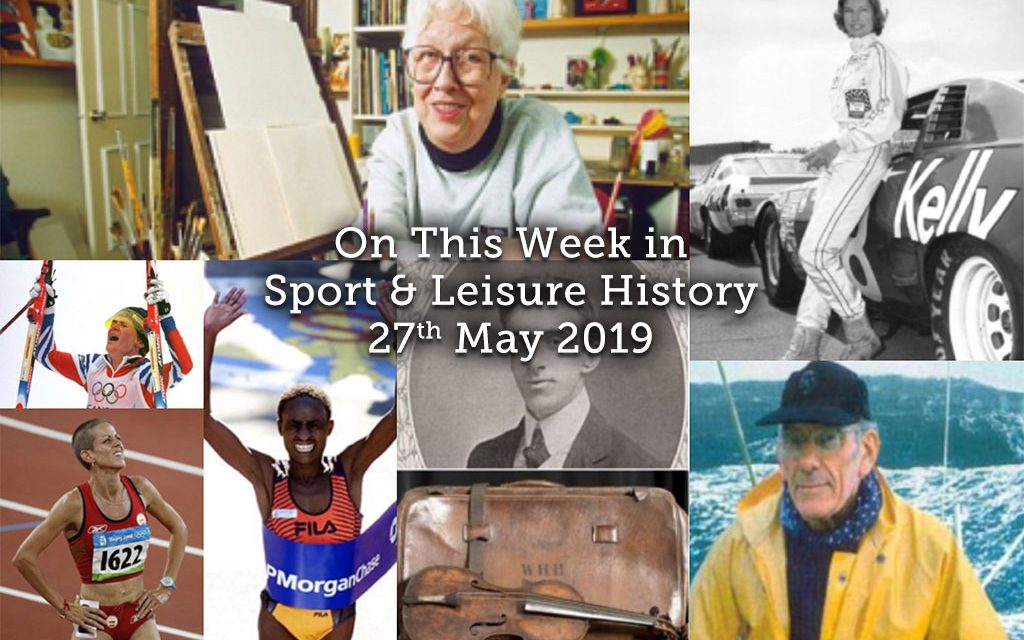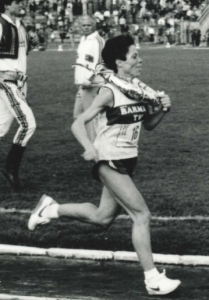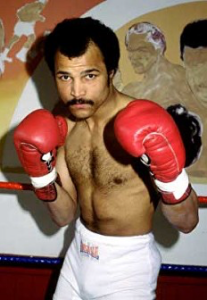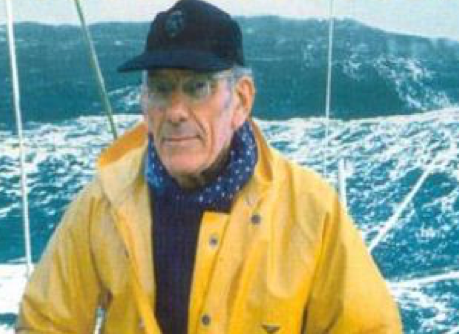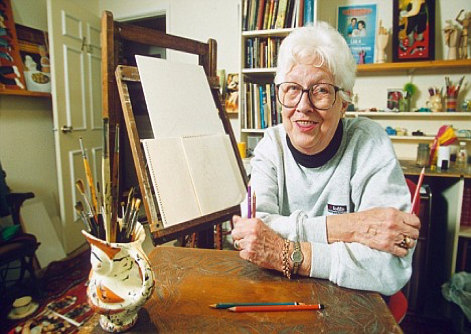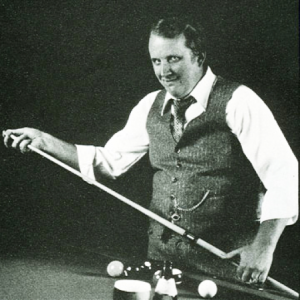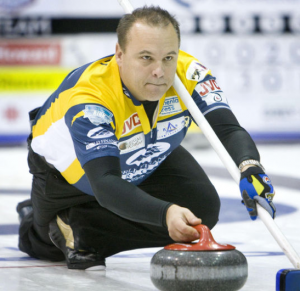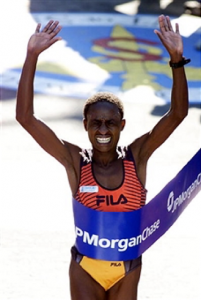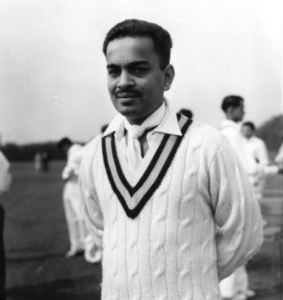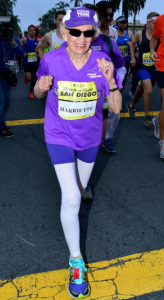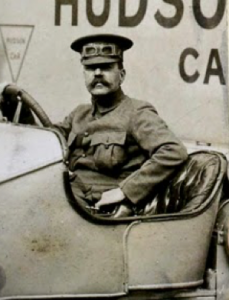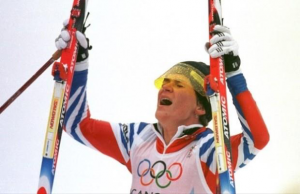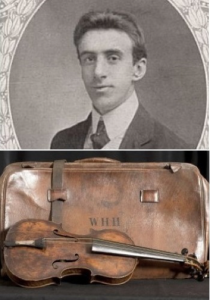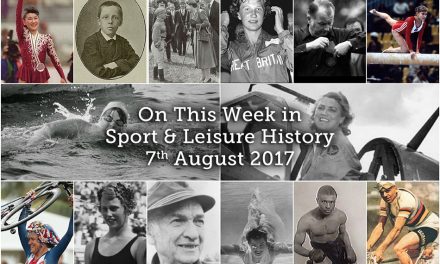27th
- On this day in past years three English Cricketers were born – firstly in 1863 Arthur Mold – who played first-class cricket for Lancashire as a fast bowler between 1889 and 1901. A Wisden Cricketer of the Year in 1892, he was selected for England in three Test matches in 1893. Mold was one of the most effective bowlers in England during the 1890s but his career was overshadowed by controversy over his bowling action. Although he took 1,673 wickets in first-class matches, many commentators viewed his achievements as tainted and he was called for throwing on a number of occasions.
- Secondly Frederick Cuming was born in 1875, educated at Blundell’s School he was a member of the gold medal winning Great Britain cricket team at the 1900 Olympics, the only time to date that cricket has featured in the Olympics. In the only game played against France he top scored with 38 in Great Britain’s first innings, and scored 18 in the second. He also took a catch in the French first innings. Little is known of his cricket career outside of the Olympics, except that he played for Exeter and for Bradnich in 1900.
- Thirdly Frank Woolley, who was born in 1887 and dubbed one of the finest all-rounders the game has seen. In a career lasting more than thirty years, he scored more first-class runs than anyone but Sir Jack Hobbs, and took over 2,000 wickets at an average of under 20. He is also the only non-wicket-keeper to have held more than 1,000 catches. His batting was remarkable both for his well-documented elegance and his rapidity of scoring.
- Chūhei Nambu, Japanese track and field athlete, who is the only person to have held world records in both the long jump and the triple jump, was born in 1904. The first results known for Nambu are from the mid-1920s. He was a member of the Japanese Olympic team at the 1928 Olympics in Amsterdam, where he competed in three events. His best performance came in the triple jump, where he came fourth, while his countryman Mikio Oda won the gold. In the long jump, he finished ninth while his 4×100m relay team was eliminated in the heats. Nambu’s real breakthrough came in 1931. After improving his Japanese record a few times, he landed a long jump just two cm short of 8m, a new world record. Jesse Owens broke the world record less than four years later but it stood as an Asian record till beaten by Hiroomi Yamada in 1970. The next year, at the Los Angeles Games, he was one of the favourites for the Olympic titles in both horizontal jumps. Nambu was disappointed with his third place in the long jump, but took revenge in the triple jump final, held a few days after the long jump. His winning mark of 15.72m set a new world record, thus becoming the first athlete to hold the world record in both horizontal jumps. He retained both records until 1935, when he lost them to Jesse Owens (long jump) and Jack Metcalfe (triple jump). Nambu was also a strong sprinter. He won the 100m at the 1930 and 1933 Japanese Championships and set a Japanese record at 10.6 seconds in 1931. After retiring from competitions Nambu became a sports journalist for Mainichi Shimbun. He also remained active in sports, being head coach for the Japanese Athletics Association, and acting as manager of the national team at the 1964 Tokyo Olympics. In 1992, he was awarded the Olympic Order in silver by the IOC. He died of pneumonia aged 93 in 1997.
- American golfer Sam Snead was born in 1912. One of the top players in the world for most of four decades. Snead won a record 82 PGA Tour events, including seven majors. He never won the US Open, though he was runner-up four times. Snead’s nickname was “Slammin’ Sammy”, and he was admired by many for having the so-called “perfect swing,” which generated many imitators. Snead was famed for his folksy image, wearing a straw hat, and making such statements as “Keep close count of your nickels and dimes, stay away from whiskey, and never concede a putt.” He was inducted into the World Golf Hall of Fame in 1974, and received the PGA Tour Lifetime Achievement Award in 1998.
- Today in 1927 the Ford motor company ceased manufacture of the Ford Model T and began to retool its plants to make the Ford Model A.
- German long distance runner Christa Vahlensieck (née Kofferschläger was born in 1949 in Düsseldorf. Known as a pioneer in the marathon for women, during her running career, from 1973-1989, she simultaneously achieved a world record in the 10,000m, in the 25k road race and the marathon; she holds 17 German champion titles. On 28 October 1973, Vahlensieck became the first German woman to complete the marathon in under three hours (2:59:26), as a youth in a German Forestrun. She set another German record (2:53:00) at the Boston Marathon on 15 April 1974. Both times were also European bests. In the same year, she won the Essen Marathon in 2:42:38. The time was not recognized as a world record because the course was 745m too short. On 3 May 1975, she succeeded at setting the world record at Dülmen with a time of 2:40:16. In the same year, she was the first German winner at the Schwarzwald Marathon in 2:45:43, a time that still stands as the course record. On 10 September 1977, her victory at the Berlin Marathon in 2:34:48 gave her another world record. At the 1983 World Championship in Helsinki she was 19th in 2:40:43. From 1973 to 1989, she won 21 marathons, among them the 1977 Berlin Marathon, five times at the Košice Peace Marathon (1981, 1984, 1986 – 1988) and the 1989 Vienna Marathon. In 1988 Vahlensieck run in the special event ‘Friendship Run Wuppertal-Košice” a course over 1765km, trespassing the Iron curtain: “an awesome experience”, as she remembers.
- British professional boxer John Conteh was born today in 1951. He competed from 1971 to1980 and held multiple light-heavyweight championships, including the WBC title from 1974 to 1978 and the European, British and Commonwealth titles between 1973 and 1974. In winning the world light-heavyweight in 1974 he beat Jorge Ahumada, thus becoming the first British world light-heavyweight champion since Freddie Mills.
- Today in 1961 Fiorentina beat Rangers 2-1 in the second leg of the first European Cup Winners’ Cup in Milan. The Italian club took the trophy 4-1 on aggregate.
- On this day in 1964 Fred Pickering scored a hat-trick for England on his debut as his team beat the USA 10-0.
- The 1987 Wimbledon champion Pat Cash was born in 1965. The first Australian winner of the tournament since John Newcombe in 1971, he climbed into the stand to celebrate, starting a tradition which has been followed by winners in subsequent years.
- On this day in 1981 Liverpool beat Real Madrid in Paris to win the 25th edition of the European Cup.
- The 2012 European 400m Hurdles Champion Irina Davydova was born today in 1988. Today in 1997 a 22 woman relay expedition from Britain reached the North Pole after a 620-mile trek across shifting pack ice. Twenty of the women took part in the expedition in relay style. Each four-member team was pulled out after completing its leg of the six-week journey. The other two–professional guides Matty McNair and Denise Martin–travelled the entire route. The final team planted the British flag at the pole and was “just jubilant,” said spokeswoman Mary Nicholson. It was the first all-female team to reach the North Pole.
- On this day in 2015, the Swedish Saab rally driver Erik Hilding Carlsson passed away. Nicknamed “Carlsson på taket” (“Carlsson on the roof”) as well as Mr. Saab (due to his public relations work for the company). The expression “Carlsson on the roof” originated from the children’s story Karlsson på taket by Astrid Lindgren, in which a Karlsson character lived on the roof of an apartment building. The name was given to Carlsson as a result of his habit of occasionally rolling a rally car onto its roof. In the Safari Rally, he even rolled the car intentionally, to escape from a mud pool. When journalists later doubted his story, he proved it by rolling the car again. The Ford factory team then tried the same stunt with their Ford Cortina, causing more damage to the car than had occurred during the entire rally Erik Carlsson married Pat Moss, also a famous rally driver and younger sister of Stirling Moss, their daughter, Susie Carlsson, was later to become successful show-jumper. In 2010, Carlsson was among the first four inductees into the Rally Hall of Fame, along with Rauno Aaltonen, Paddy Hopkirk and Timo Mäkinen
- Christa Vahlensieck
- John Conteh
28th
- Reputedly on this day in 1742 the first indoor swimming pool opened in Britain in London. London in the 18th century had a stench all its own, the Thames and Fleet open sewers, the streets still clogged with filth. The poor still used the open waterways of the capital for the pleasure of swimming, though the degree of pleasure to be had from a dip in the Thames at that time is perhaps debatable. Thus it was that the Bagnio, opened in Lemon Street, Goodman’s Fields, a business idea whose time had come. For the subscription of a guinea gentlemen (and only gentlemen, ladies were not to be countenanced) could use the 43ft long pool, advertised as being warmed and kept fresh every day. As this was indoors the prying eyes of lesser mortals would be kept from the wealthy users – at the price of a guinea the lower rungs of society were unlikely to be interested in the pool. The facilities of the Bagnio included a cold pool as well as the warmed one, and what were described as waiters were available to teach the art of swimming to those who had not yet mastered it. Two observations should be made about the Bagnio as an innovation. The first is that the Romans in the first century AD are believed to have had such facilities in Britain – they had already installed a heated pool in Rome in the first half of the century. The second is that Bagno or Bagnio was also a synonym for brothel, so we may speculate on other services available beyond swimming.
- Born on this day in 1878 Paul Eugène Pelliot,, French sinologist and Orientalist best known for his explorations of Central Asia and his discovery of many important Chinese texts among the Dunhuang manuscripts.
- George Reginald “Red” Horner, Canadian Ice hockey player was born in 1909. He played for the Toronto Maple Leafs in the National Hockey League from 1928 to 1940. He was the Leafs captain from 1938 until his retirement. He helped the Leafs win their third Stanley Cup in 1932. Horner was inducted into the Hockey Hall of Fame in 1965. After retiring from hockey in 1940, he became involved in business ventures for several companies including the Elias Rogers Fuels Ltd and the Canada Coal Company Ltd, where he became President before retiring. On February 13, 1999, Horner was involved in the opening ceremonies for the 65th anniversary of Maple Leaf Gardens and its closing the same day; he was also involved in the opening of the Air Canada Centre. Horner was last surviving member of Toronto’s 1932 Stanley Cup team. He was the oldest living NHL player at the time of his death in Toronto, in 2005 at the age of 95 and is buried in Mount Hope Catholic Cemetery in Toronto.
- The first TT race on the Islet of Man took place in 1907. One race was held over 10 laps of the St John’s Circuit. The single-cylinder category was won by Charlie Collier on a Matchless travelling at an average speed of 38.20mph (61.4km/hr) ‘Rem’ Fowler won the twin-cylinder category on a Norton.
- On this day in 1934 Jack Hobbs scored his 197th and last first-class cricket ton at 51 years and 163 days.
- Maeve Binchy Snell known as Maeve Binchy, Irish novelist, playwright, short story writer, columnist, and speaker was born in 1939. She is best known for her sympathetic and often humorous portrayal of small-town life in Ireland, her descriptive characters, interest in human nature, and often clever surprise endings. Her novels, which were translated into 37 languages, sold more than 40 million copies worldwide, and her death at age 73 on 2012, which was announced by Vincent Browne on Irish television, was mourned as the death of Ireland’s best-loved and most recognisable writer.
- João Carlos de Oliveira, also known as “João do Pulo” was born in Pindamonhangaba, São Paulo in 1954 was a Brazilian triple jumper and the long jumper. De Oliveira won two Olympic bronze medals. His personal best of 17.89m, set on October 15, 1975 in Pan American Games, stood as the world record until 1985. As of today, it is still in the top twenty of all-time best results in the event. In 1981, he was in a car accident near São Paulo in which he lost one leg. Afterward, he became a vocal advocate for the rights of the disabled. He died in May 1999 from complications of alcoholism.
- Today in 1967 Sir Francis Chichester arrived in Plymouth aboard his yacht, Gypsy Moth IV, after completing his epic single-handed voyage around the world. He crossed the finishing line at 20:58, nine months and one day after setting off from the historic port. He was the first man to race around the world solo with only one port of call, Sydney. About 250,000 well-wishers cheered and sang, welcoming home the 65-year-old adventurer, thousands of small boats accompanied Gypsy Moth into Plymouth Sound 119 days after setting sail from Sydney, Australia, the only stop in the mammoth journey. At the breakwater, Sir Francis was joined by his wife, Lady Chichester, and son Giles who brought two bottles of champagne on board. The home-coming was carefully planned and he was met on shore by the Lord Mayor of Plymouth and other dignitaries and driven to the Guildhall. There, at a press conference, he was asked what he would like to do now. “What I would like after four months of my own cooking is the best dinner from the best chef in the best surroundings and in the best company.” Later he received a message from the Queen and Prince Philip congratulating him on his achievement. Sir Francis has spent nearly 220 days alone at sea and crossed the Atlantic, Cape of Good Hope, the Pacific and Cape Horn – 28,500 miles of dangerous ocean. In 1971 he made one more solo transatlantic crossing, then ill-health forced him to pull out of another transatlantic race in 1972 and he died a few weeks later on 26 August. Several British yachtsmen and women have beaten the 220-day record since 1967. Naomi James was the first woman to do this in 1978 and beat Sir Francis’ record by two days. In February 2001 after 94 days at sea Britain’s Ellen MacArthur became the fastest woman to sail the world. Four years later, in 2005, she became the fastest person to sail solo non-stop around the world – in 71 days and 14 hours.
- Footballer Diego Maradona moved from Argentinos Juniors to Barcelona in 1982 in soccer’s first £5million transfer.
- Maiden, skippered by Tracy Edwards, and with an all-female crew, sailed into Southampton at the end of the Whitbread Round the World Yacht race in 1990. The yacht finished in 18th place overall.
- English artist Beryl Cook, best known for her original and instantly recognisable paintings was born in 1926. Often comical, her works pictured people whom she encountered in everyday life, including people enjoying themselves in pubs, girls shopping or out on a hen night, drag queen shows or a family picnicking by the seaside or abroad. She had no formal training and did not take up painting until her thirties. She was a shy and private person, and in her art often depicted the flamboyant and extrovert characters she would like to be. Cook admired the work of the English visionary artist Stanley Spencer, his influence evident in her compositions and bold bulky figures. Another influence was Edward Burra, who painted sleazy cafes, nightclubs, gay bars, sailors and prostitutes, although, unlike Burra, she did not paint the sinister aspects of scenes. She had an almost photographic memory. Although widely popular and recognized as one of the most well-known contemporary British artists, Cook never enjoyed acceptance by the art establishment, she died aged 81 in May 2008.
- Francis Chichester
- Beryl Cook
29th
- On this day in 1852 the Swedish opera singer, Jenny Lind, often known as the “Swedish Nightingale” left American after a two year tour. She had originally been invited by the showman PT Barnum and gave 93 large-scale performances before continuing under her own management. She earned more than $350,000 from these concerts which she donated to charities, principally the endowment of free schools in Sweden.
- In 1902 Edgbaston became the fifth English Test cricket ground. England celebrated by bowling out Australia for just 36 runs.
- German showjumper Alwin Schockemohle was born in 1935. He won the 1976 Olympic title on Warwick Rex. His brother Paul was also a top international showjumper.
- Leading National Hunt trainer Martin Pipe was born in 1945. His horses won a record 230 races in the 1990-91 season and collected a record £1.2 million prize-money. Many of Pipe’s winners were ridden by Peter Scudamore.
- Sir Edmund Hilary and Sherpa Tenzing became the first men to reach the summit of Mount Everest, at 11:30 am on May 29th 1953. The two men hugged each other with relief and joy but only stayed on the summit for 15 minutes because they were low on oxygen. Hillary took several photographs of the scenery and of Sherpa Tenzing waving flags representing Britain, Nepal, the United Nations and India. Sherpa Tenzing buried some sweets and biscuits in the snow as a Buddhist offering to the gods. The pair looked for signs of George Mallory and Andrew “Sandy” Irvine who had disappeared in 1924 in a similar attempt to conquer Everest, but found nothing. Then they began the slow and tortuous descent to rejoin their team leader Colonel John Hunt further down the mountain at Camp VI. When he saw the two men looking so exhausted Col Hunt assumed they had failed to reach the summit and started planning another attempt. But then the two climbers pointed to the mountain and signalled they had reached the top, and the celebrations began. New of the conquest did not reach the outside world until June 2nd, the eve of the Queen’s coronation.
- Two goals from Bobby Charlton helped Manchester United beat Benfica 4-1after extra time in 1968 to become the first English winners of the European Cup.
- In 1974 Alan Old scored 37 points for the British Lions against South Western Districts at Mossel Bay, South Africa, a tour record by a Lions player. Team-mate JJ Williams also made the record books, scoring a tour record six tries.
- Today in 1977 Janet Guthrie became the first woman to drive in the Indy 500, she finished 29th with engine trouble. She went on to compete in two more Indy 500s, finishing ninth in the 1978 race. Overall, she competed in 11 Indy car events with a best finish of fifth. During her unsuccessful bid to qualify for the 1976 race, many of the drivers in the male-dominated sport stated that the reason she did not qualify was mainly due to her gender. These comments angered then three-time champion AJ Foyt to the point he lent Guthrie a back-up car to conduct a shake-down test. Her top practice lap in Foyt’s car would have been adequate to qualify for the field. This prompted Foyt to state that the only reason Guthrie did not qualify was due to the lack of funds for her team, and not because of her gender. She was one of the first to be elected to the International Women’s Sports Hall of Fame. She was inducted into the International Motorsports Hall of Fame in 2006.
- On this day in 1983 Yuri Dumchev of USSR set a new world discus record of 71.86m, adding 70cm to the mark set five years previously by Wolfgang Schmidt.
- A riot at the Heysel Stadium, Brussels, in 1985 resulted in 41 Italian and Belgian football fans losing their lives as a wall and safety fence collapsed before the start of the European Cup final between Liverpool and Juventus. Juventus won the match 1-0.
- Canadian amputee Steve Fonyo completed his “Journey for Lives” cross-Canada marathon on this day in 1985, after starting on March 31st 1984m and covering 7924km (4924miles). Fonyo lost his left leg to cancer at the age of 12. His marathon followed in the footsteps of Terry Fox, who had to abandon his “Marathon of Hope” when his cancer returned. Fonyo raised over $14million (Canadian dollars) and was named an Officer of the Order of Canada in 1985, the youngest person ever given that status at the time.
- Steve Mizerak, world champion pool player who was dominant during the 1970s and early 80s died today in 2006 aged 61. Nicknamed “the Miz“, he also had a brief turn as professional snooker player. Mizerak began playing pool under the guidance of his father, who for many years had been the New Jersey State Champion. Mizerak suffered a stroke in 2001 which left him with physical challenges that prevented him from playing pool competitively. He was inducted into the BCA Hall of Fame in 1980. He was ranked number 6 among the Billiards Digest “50 Greatest Players of the Century”.
- Former World No 1 ranked American tennis player Doris Hart died today in 2015. She won a Career Grand Slam in singles and is one of three players to have a “boxed set” of Grand Slam titles—every possible title (singles, doubles, and mixed doubles) from all four Grand Slam events. As a child, Hart suffered from osteomyelitis, which resulted in a permanently impaired right leg. She started playing tennis when she was 10 years old, greatly encouraged by her brother Bud. Hart retired from the tour in 1955 to become a tennis teaching professional. She was inducted into the International Tennis Hall of Fame in 1969. She died at her home in Coral Gables, Florida, aged 89.
- Janet Guthrie
- Steve Mizerak
30th
- On this day in 1631 the publication of the first French newspaper Gazette de France.
- Colin Blythe, also known as Charlie Blythe, English cricketer was born in 1879. He played for Kent as a left-arm orthodox spin bowler. He was born in Deptford and died near Passchendaele on active service with the British Army during World War I. He is generally regarded as one of the best bowlers of the period between 1900 and 1914. Blythe played in 19 Test matches for England from 1901 to 1910. He was a Wisden Cricketer of the Year in 1904.
- The only ever athlete to win an Olympic title by a walkover – Wyndham Halswelle was born on this day in 1882. Born in London to London-born, Edinburgh-trained artist Keeley Halswelle and Helen Marianna Elizabeth Gordon, he is usually referred to as being Scottish, the nationality of his maternal grandfather, General Nathaniel J. Gordon Wyndham Halswelle had a notable athletic career at Charterhouse School and the Royal Military College, Sandhurst, before being commissioned into the Highland Light Infantry in 1901. While his regiment was in South Africa in 1902 for the Second Boer War, Halswelle’s ability was recognised by Jimmy Curran, a coach and amateur athlete. It was he who persuaded Halswelle to take up athletics seriously when his regiment returned to Edinburgh in 1904. In the 1908 Olympics, Halswelle reached the final of the 400m with the fastest qualifying time (an Olympic record of 48.4s). The 400m was not run in lanes at this time. Halswelle was baulked by William Robbins in the first 50m. Then, coming off the final bend, Robbins led John Carpenter by a yard, with Halswelle waiting to pass him in the last straight, as he had done to other athletes in the earlier rounds. Carpenter ran wide, forcing Halswelle to within 18 inches of the outside of the track, using his right elbow to prevent Halswelle overtaking. British umpire Roscoe Badger observed that Carpenter maneuvered so as to prevent Halswelle from passing him. While blocking competitors was an acceptable strategy in the USA, it was prohibited by the British rules under which the 1908 London Olympics were organized. Badger immediately signalled the judges to declare the race void, pictures of the race indicate that Carpenter (intentionally or not) blocked Halswelle. Carpenter was disqualified, and the race was ordered to be re-run in lanes two days later; however, the other two US runners refused to race, so a reluctant Halswelle ran the race by himself to win the gold in a time of 50.2sec. It is the only occasion in Olympic history where the final was a walkover. As a result of the controversy, from the next Olympics in 1912 onwards all 400m races were run in lanes and the International Amateur Athletic Federation was founded to establish uniform worldwide rules for athletics. The controversy soured Halswelle’s view of athletics. He was also under pressure from his senior officers, who felt he was being exploited and he retired from athletics after a farewell appearance at the 1908 Glasgow Rangers Sports.
- Roy Harroun, in a Marmon Wasp, won the inaugural Indianapolis 500 race in 1911. The evet is staged annually at the end of May as part of the Memorial Day celebrations.
- Former England fast bowler and Test cricket captain Bob Willis was born in 1949. His finest hour came in the 1981 Headingley Test when he prevented Australia from scoring 130 runs they needed to win with a devastating spell that produced eight wickets for 43 runs. Canadian retired curler from
- Alberta Randy Ferbey was born on this day in 1959. A six-time Canadian champion and a four-time World Champion Ferbey notably popularized the system of having the skip throw third rocks, when he skipped the team nicknamed “the Ferbey Four”, a team he won four Briers (2001, 2002, 2003, 2005) and narrowly missing winning the 2004 final after giving up a 7-3 lead to Mark Dacey. Others teams in both men’s and women’s curling have adopted the system of not having the skip throw last stones.
- In 1971 Keith Boyce of Essex enjoyed one of his best spells when he took eight Lancashire wickets for 26 runs to set a John Player Sunday League record.
- Kenyan Marathon runner Margaret Okayo was born in 1976. She has won a number of major marathons, including the New York City Marathon (three times), the Boston Marathon, and the London Marathon. She has also won the San Diego Marathon on two occasions. Okayo started running while at primary school. She graduated from the Itierio Secondary School, near Kisiitown, in 1993. She was recruited by Kenya Prisons Service, home to the country’s top women’s marathon runners, in 1995 where she nurtured her running career. At the 1998 Commonwealth Games she finished fifth in 10,000m. She finished thirteenth at the 1999 IAAF World Half Marathon Championships. Amongst her most successful races are the wins at the New York Marathon in 2001 and 2003, the Boston Marathon in 2002 and the London Marathon in 2004. She still holds the course records at the New York Marathon and the Boston Marathon. Other marathons won by Okayo include Milan in 2003, San Diego in 2000 and 2001. She represented her native Kenya in the 2004 Olympic Games in Athens, but did not finish the marathon. She also won the 2003 Udine Half Marathon and finished third at the 2008 Rome-Ostia Half Marathon. Today in 2012 after Simon Bolivar’s UK concert, featuring Venezuela’s premier youth orchestra sells out eight months in advance, it is announced that the concert will be live-streamed on June 23rdand 26th 2012.
- On this day in 2015 Alistair Cook became the leading run scorer of all time (to that date) in Test Cricket for England.
- Randy Ferbey
- Margaret Okayo
31st
- Citing poor eyesight, Samuel Pepys records the last event in his diary on this day in 1669.
- The first recorded bicycle race took place over 2km (1.25miles) course at Parc de St Cloud in Paris in 1868 and was won by James Moore of Britain.
- Ukrainian hammer thrower Anatoliy Bondarchuk was born on this day in 1940. He is regarded as the most accomplished hammer throw coach of all time and is also noted as the author of the two-volume book Transfer of Training, which was translated from Russian to English by Michael Yessis. As an athlete, Bondarchuk accumulated numerous international awards and honours throughout a long career. Beginning the hammer throw at a late age of 24, he won his first international title at the 1969 European Championships. Near the end of the season, Bondarchuk set two world records and he remained among the world’s elite for several years and won gold at the 1972 Olympics while setting an Olympic Record of 75.50m. Four years later, he won bronze at the 1976 Olympics. For his Olympic achievements Bondarchuk was awarded the Order of the Badge of Honour in 1972 and the Order of the Red Banner of Labour in 1976. Despite his athletic success, Bondarchuk is better known as a coach. He began coaching while competing himself, and has since worked with medal-winning athletes at five Olympic Games. His most famous trainee is two-time Olympic champion and current hammer world record holder Yuri Sedykh. Bondarchuck is currently living and coaching in Kamloops, British Columbia, Canada, where he guided Canadian shot put record holder Dylan Armstrong to a fourth-place finish at the 2008 Olympics. His trainees in hammer throw include Canadian record holder Sultana Frizell, former Canadian record holders Jennifer Joyce and Crystal Smith, Megann Rodhe, U.S. champion Kibwe Johnson, Caymanian record holder Michael Letterlough, Swiss champion Martin Bingisser and 2012 Canadian Olympian Justin Rodh.
- Stéphane Caristan, retired French hurdler was born in 1964, he set the world’s best year performance in 1986. He did so by winning the 110ms hurdles at the European Championships in Stuttgart, clocking 13.20, which was also his personal best. He competed in three consecutive Summer Olympics for his native country, starting in 1984. Caristan later became the coach of French sprinter Christine Arron.
- In 1965 Jim Clark from the UK became the first non-American winner of the Indianapolis 500, winning in his Lotus at an average speed of 150.69m[h (242.4km/hr). In 1980 Tony Ward scored 18 points against South Africa at Cape Town, a record at the time for a Lions player in an international Test match.
- Frode Estil was born in 1972 in Lierne, Nord-Trøndelag, Norway. A cross-country skier, Estil was a classical specialist and also a specialist at succeeding in World Championships and Olympics. While he only won four World Cup races, he won one individual Olympic Gold in 2002 and one individual World Championship gold. In addition, he won three team events in the World Championships and another team gold in the 2002 Olympics.
- Former world heavyweight busing champion Jack Dempsey died in 1983.
- In 1984 West Indian batsman Viv Richards set a record in a one-day international scoring 189 not-out against England at Old Trafford. A 92-year-old cancer survivor entered the record books.
- Latvian heptathlete Laura Ikauniece was born in 1992, her personal best of 6516 points was set at the 2015 World Championships, where she won bronze. At the 2012 European Athletics Championships Ikauniece initially won bronze, after a hard fight with fellow Latvian Aiga Grabuste. Finally, Ikauniece finishing 10 points ahead to take third. Later on she was awarded with the silver medal, as a result of the disqualification of Ukrainian athlete Lyudmyla Yosypenko. Laura won silver at the 2009 World Youth Championships in Brixen, Italy, with 5647 points. In 2010 she finished 6th in the World Junior Championships with 5618 points. In 2011 she won bronze at the European Athletics Junior Championships. In 2015, she won bronze at the World Athletics Championships.
- Charles Van Acker, Belgian-American racing car driver, died on this day in 1998 in South Bend, Indiana. He first attempted to qualify for the Indianapolis 500 in 1946 but was too slow. In 1947 he made the race and finished in 29th after a crash on lap 24. He also competed in seven more races of the national trail that season and finished 4th in points. In 1948 he came 11th in the Indy 500 and 10th in the National Championship. 1949 saw him crash 10 laps into the Indy 500 and struggle to qualify for much of the rest of the season. He attempted the 1950 Indianapolis 500 but failed to qualify in what would be his last Championship Car appearance. He owned and operated the South Bend Motor Speedway in South Bend, Indiana and once after a dirt track crash in Dayton, Ohio was declared dead. However, Van Acker claims that the reports were exaggerated and that he was not that seriously injured!
- Indian cricketer Subhash “Fergie” Gupte died today in 2002 aged 72. One of Test cricket’s finest spin bowlers. Sir Garry Sobers pronounced him the best leg spinner that it had been his pleasure to see. The West Indians who toured India in 1958/9 reckoned that Gupte could turn the ball on glass. His only drawback perhaps was that he tended to lose confidence when the batsmen attacked his bowling. He made his debut in 1951/2 and from the next season onward took over from Vinoo Mankad as India’s leading spinner. He was nicknamed after the West Indian leg spinner Wilfred Ferguson. Gupte took 27 wickets in West Indies in 1952/3 and 34 against New Zealand at home in 1955/6. At Kanpur in 1958/9, he took nine West Indian wickets in an innings for 102 runs, and had Lance Gibbs – the only batsman he missed – dropped by wicket keeper Naren Tamhane. He once took all ten wickets in an innings for Bombay against Bahawalpur CC, and once in the Lancashire league for Rishton. His career ended in unfortunate circumstances in 1961/2. The Indian team was staying at the Imperial Hotel in Delhi during the Test against England. AG Kripal Singh, Gupte’s roommate, called up the receptionist and tried to fix a date with her. She complained to the Indian manager. Since the board had already made up their minds to punish both the players, Gupte was reprimanded by one of the board members for not stopping Kripal from using the hotel phone. Utterly disgusted by the suggestion, he responded with barely disguised indignation. “He is a big man. How can I stop him?” “Nothing had happened,” Gupte reflected. “Kripal had not raped the girl or assaulted her, he just asked her out for a drink. Ultimately, the board took the decision that neither player should be considered for the subsequent West Indies tour. Gupte, who was only 32 at that time and had taken 149 wickets at 29.55 in 36 Tests, never played for India again and instead went to Trinidad and settled there, where he had married a local girl two years earlier. He even played a few first class matches for them. Mihir Bose, in his famous book History of Indian Cricket, sarcastically summed up Gupte’s career thus: “India`s first great spinner ended his career because he happened to share a room with a man who wanted a drink with a girl.” In 1981/2, a benefit match was held for Gupte in Sharjah. His brother Baloo Gupte was also a leg spinner who played for India.
- On this day in 2015 Harriette Thompson of Charlotte, North Carolina completed Sunday’s Rock ’n’ Roll Marathon in San Diego in 7hr 24min 36sec and became the oldest woman known to finish a marathon. She was mobbed by well-wishers as she crossed the finish line. She ran the course wearing white tights to cover the open wounds on her legs from radiation treatments for squamous cell carcinoma, from which she had suffered for some years. The previous years, at the age of 91, she ran the San Diego marathon in 7 hours, 7 minutes and 42 seconds — faster by nearly two hours than Mavis Lindgren’s official United States record for a woman of at least 90. In all, her running at the San Diego marathon raised more than $100,000 for the Leukemia & Lymphoma Society, a national charity.
- Subhash “Fergie” Gupte
- Harriette Thompson
1st June
- Today in 1831 James Clark Ross reached the Magnetic North Pole, becoming the first European to do so.
- Max Emmerich, American track and field athlete and gymnast who competed in the 1904 Olympics, was born in 1879 in Indianapolis. In 1904 he won gold in the triathlon. He also was 67th in gymnastics’ all-around and 100th in gymnastics’ triathlon.
- Trent Bridge became the fourth English Test cricket in 1899 when it hosted the England v Australia Test. This Test also marked the debut of both Wilfred Rhodes and Victor Trumper and the final one of WG Grace.
- The BBC broadcast its first commentary of the Epsom Derby on this day in 1927. The race was won by Call Boy, ridden by Charlie Elliott.
- Today in 1930 saw the 35th edition of the French Championships (now Fench Open): Henri Cochet beat Bill Tilden and Helen Wills Moody was victorious over Helen Jacobs.
- Colonel Sir Toby Alfred Rawlinson, died on this day in 1934 aged 67. He was an English pioneer motorist and aviator soldier and intelligence officer, and sportsman. Rawlinson was a polo player in the 1900 Olympics; he was part of the Foxhunters Hurlingham polo team which won the gold medal. He was also a keen motor racing driver, resigning from the army to concentrate on the sport. He took part in the 1908 Isle of Man RAC Tourist Trophy (“TT”) race, driving his Darracqinto 7th place. On 5 April 1910 he became only the third person in the United Kingdom to hold a Royal Aero Club aviators certificate.
- On this day in 1939 the first boxing match to be televised was from the Yankee Stadium when Lon Nova defeated Max Baer.
- Born today in 1952 – Mihaela Loghin – Romanian shot putter. She won a silver medal at the 1984 Olympics, one centimetre behind Claudia Losch and a bronze medal at the 1986 European Indoor Championships. After retiring from competitions in 1991, Loghin taught physical education, first at a school in Focsani and since 1992 at a military academy. She has continued to compete in Masters Events, setting the world record in the W60 division on 9 June 2012 at a meet in Bucharest.
- Gordon Richards was knighted by Her Majesty the Queen in 1953. Sir Gordon showed his gratitude six days later by beating the Queen’s horse, Aureole, into second place in the Derby!
- Disgraced Russian professional cross-country skier Larisa Lazutina was born in 1965. In the 1998 Winter Olympics in Nagano, Japan, she won five medals in skiing events: three gold, a silver and a bronze. She was the most successful athlete at the 1998 Winter Olympics. Upon her return from the Olympics, Boris Yeltsin awarded her the title Hero of the Russian Federation. However, Lazutina was banned from competition for a period of 2 years due to a positive drug test result during the 2002 Winter Olympics in Salt Lake City. Before the drug test controversy in 2002 ended her career, Lazutina earned several medals at the FIS Nordic World Ski Championships. She won a total of sixteen medals, including eleven golds, three silvers and two bronzes (20k: 1987 (as Larissa Ptitsyna) and 10k: 2001). She was also the first three-time winner of the women’s 30k event at the Holmenkollen ski festival (1995, 1998, and 2001). Controversy seemed to follow her, as in 2007 she was awarded a PhD at the Russian Presidential Academy of National Economy and Public Administration but according to an examination by Dissernet, her thesis was heavily plagiarised.
- Britain’s top chess player Nigel Short was born in 1965. The highest ranked Briton ever on the Elo list (the accepted rating system for chess-playing ability), he came through the eliminations to earn a meeting with defending world champion Gary Kasparov in 1993.
- On this day in 1967, Sgt Pepper’s Lonely Hearts Club Band was released by The Beatles.
- Frédérik Deburghgraeve, former Belgian swimmer was born in 1973. Winner of the gold medal in the 100m breaststroke at the 1996 Olympics, he set a world record along the way. He is now retired from swimming and makes a living as a salesman. He currently lives in Roeselare. Deburghgraeve was trained by a Dutchman, named Ronald Gaastra, in 2008 Deburghgraeve was inducted in the International Swimming Hall of Fame.
- Today in 1978 David Gower made his Test debut scoring 58 against Pakiston at Edgbaston
- Lester Piggott rode his record ninth Derby winner, Teenoso, on this day in 1983.
- On this day in 1984 Soviet weightlifter Alexander Gunyashev snatches a world record weight of 211kg.
- At 32 Wessel Johannes “Hansie” Cronje, South African cricketer and Captain of the South African National Cricket Tea, in the 1990s, died in a plane crash in 2002. He was voted the 11th greatest South African in 2004 despite having been banned from cricket for life due to his role in a match-fixing scandal.
- Irish racehorse trainer Michael Vincent O’Brien died today in 2009 aged 92. From Churchtown, County Cork, in 2003 O’Brien was voted the greatest influence in horse racing history in a worldwide poll hosted by the Racing Post. In earlier Racing Post polls he was voted the best ever trainer of national hunt and of flat racehorses. He trained six horses to win the Epsom Derby, was twice British champion trainer, won three Grand Nationals in succession and trained the only British Triple Crown winner since the Second World War. Aidan O’Brien (no relation) took over the Ballydoyle stables after his retirement.
- Kazuo Ohno died on this day in 2010 at the grand old age of 103. He was a Japanese dancer who became a guru and inspirational figure in the dance form known as Butoh. It was written of him that his very presence was an “artistic fact.” He is the author of several books on Butoh, including The Palace Soars through the Sky, Dessin, Words of Workshop, and Food for the Soul. The latter two were published in English as Kazuo Ohno’s World: From Without & Within (2004). Ohno once said of his work: “The best thing someone can say to me is that while watching my performance they began to cry. It is not important to understand what I am doing; perhaps it is better if they don’t understand, but just respond to the dance”.
- Toby Alfred Rawlinson
- Larisa Lazutina
2nd
- On this day in 1835 PT Barnum and his circus start their first tour of the United States.
- Today in 1901 in New York, Benjamin Adams was arrested at Saegkill Golf Course for playing golf on a Sunday.
- Swimmer Johnny Weissmuller was born in 1904. The first man to swim 100m in under one minute, he won five gold medals at the 1924 and 1928 Olympics.
- On this day in 1910, Charles Rolls, a co-founder of Rolls-Royce Ltd, becomes the first man to make a non-stop double crossing of the English Channel by plane.
- The most famous English violinist and bandleader you have probably never heard of – Wallace Henry Hartley – was born on this day in 1878. It is the date of his death that is the most poignant thing – at the age of 33 he died on 15th April 1912 – as he led his eight member band to play as the RMS Titanic sank.
- Today in 1933 Franklin D Roosevelt authorised the first swimming pool to be built inside the White House.
- In 1935 Babe Ruth, at the age of 40, announced his retirement as a player.
- Lester Piggott won his first Epsom Derby in 1954 at the age of 18, partnering 33-1 shot Never Say Die to a memorable win. His mount was the first American-bred winner since Iroquois in 1881. Two weeks after his Derby triumph he was suspended for six months for his reckless riding of the same horse at Royal Ascot and so missed the chance of riding him in the St Leger, Charlie Smirke got the ride and won the race.
- On this day during the 1962 Football World Cup, police had to intervene multiple times in fights between Chilean and Italian players in one of the most violent games in football history. The competition as a whole was marred by violence and this poisonous atmosphere culminated in the infamous first-round match between host Chile and Italy (2–0), known as the Battle of Santiago. Two Italian journalists had written unflattering articles about the host country. Although only two players (both of them Italian) were sent off by the English referee Ken Aston, the match saw repeated attempts from players on both sides to harm opponents, and the Italian team needed police protection to leave the field in safety.
- The former racing driver, and later top manufacturer, Bruce McClaren of New Zealand was killed in 1970 while testing one of his own Can-Am cars at Goodwood.
- In 1976 Piggott has won the Epsom Derby for a record seventh time, riding the French-trained Emperie. By the final furlong it was clear Piggott would win when he raced ahead of the leaders. His achievement beats the previous records set by Jim Robinson in the 1830s, and Steve Donoghue during the wartime years, both of whom won six times each. The prize was £100,000, making it the richest Derby ever at the time. Over 300,000 watched the race and throughout the UK £25m was spent betting on the 23 runners. Piggott became the race’s youngest winning jockey this century when, aged 18, he was successful on the 33/1 shot Never Say Die in 1954. Piggott went on to win the Derby on two further occasion (1977 and 1983) bringing him to an unbeaten total of nine victories. He first announced his retirement in 1985, but two years later he was found guilty of a £3.25m tax fraud, imprisoned and stripped of his OBE. Following his release, he returned to the saddle in 1990 and scored a fairy-tale triumph on Royal Academy in the Breeders’ Cup Mile in America. Aged 56, he claimed the 2,000 Guineas in 1992 on Rodrigo de Triano – his 30th British Classic win. Piggott finally retired in 1995, although he took part in a special race at the Melbourne Cup meeting in 2001.
- Spanish middle-distance runner Natalia Rodríguez Martínezwas born in 1979. She represented Spain at the Summer Olympics in 2000, 2004, 2008 and 2012. At the 2009 IAAF World Championships, Rodríguez initially finished first in the 1500m, but was disqualified for tripping Gelete Burka. With 200m to go, Rodríguez thought she had a clear path to pass the Ethiopian runner on the inside, but when she attempted the pass, the pair collided and Burka crashed to the track. Rodríguez won the silver medal at the 2010 IAAF World Indoor Championships, before going on to take the bronze medal outdoor at the 2010 European Athletics Championships. She won the 2011 Cursa Bombers 10K race in Barcelona, although hot weather and a Catalan-only rule meant the race was uncompetitive.
- In 1985 UEFA ruled that English Football clubs would be banned immediately from playing in Europe following the riot at the Heysel Stadium, for which Liverpool fans were held responsible.
- Didier Camberabero scored a record 30 points in France’s 70-12 win over Zimbabwe in the 1987 Rugby Union World Cup at Auckland.
- Gunder Gundersen, Norwegian nordic combined skier and sports official, died in 2005. During his active career he won two individual FIS Nordic World Ski Championships medals (1954: silver, 1958: bronze) and the Holmenkollen ski festival three times (1952, 1959 (shared with Sverre Stenersen, and 1960). He finished eleventh in the Nordic combined event at the 1960 Winter Olympics in Squaw Valley. Gundersen was also the Technical Director of the Nordic combined individual event at the 1980 Winter Olympics in Lake Placid. His most significant impact on Nordic combined was creating the “Gundersen method”, in use since 1985. This method recalculated the ski jumping points into cross country skiing start times with the athletes then starting at staggered times with the winning ski jumper starting first. For the 15km individual and the 7.5km sprint, the difference between the competitors at the start of the cross country portion of the event was one ski jumping point equalling four seconds. For the 4×5km team event, one ski jumping point equalled 3 seconds, but this was changed in 1995 to one point equalling 1.5 seconds, then in 2005 to one point equalling one second, and then again in 2009 to one point equalling 1.33 seconds.
- Russian bobsledder Nikolay Khrenkov was only 29 when he died in 2014. Khrenkov’s best World Cup finish was first in the four-man event at Park City, Utah in December 2010. He also finished second in a four-man World Cup race at Whistler Sliding Centre in February 2012. He was also a member of the four-man crew led by Alexandr Zubkov which won silver medals at the Bobsleigh European Championship in 2011 and 2012. He was tragically killed in a car crash near the village of Podgorny on the way to visit his parents.
- On this day in 2015, Sepp Blatter, president of FIFA, resigned five days after his re-election to a fifth term. Several FIFA officials had previously been arrested in a corruption scandal, but at the time Blatter had not been charged. Criminal proceedings were however announced against Blatter by the Swiss Attorney General’s office on 25 September 2015, regarding “criminal mismanagement… and misappropriation”. In October 2015, Blatter and other top FIFA officials were suspended amid the investigation, and in December the independent FIFA Ethics Committee ejected Blatter from office and banned him from taking part in any FIFA activities over the following eight years. On 24 February 2016, a FIFA appeals committee upheld the suspension but reduced it from eight years to six. Issa Hayatou served as the acting President of FIFA until an extraordinary FIFA Congress was held in late February, electing Gianni Infantino as the 9th president of FIFA
- Wallace Henry Hartley & his Violin
- Natalia Rodríguez Martínez

